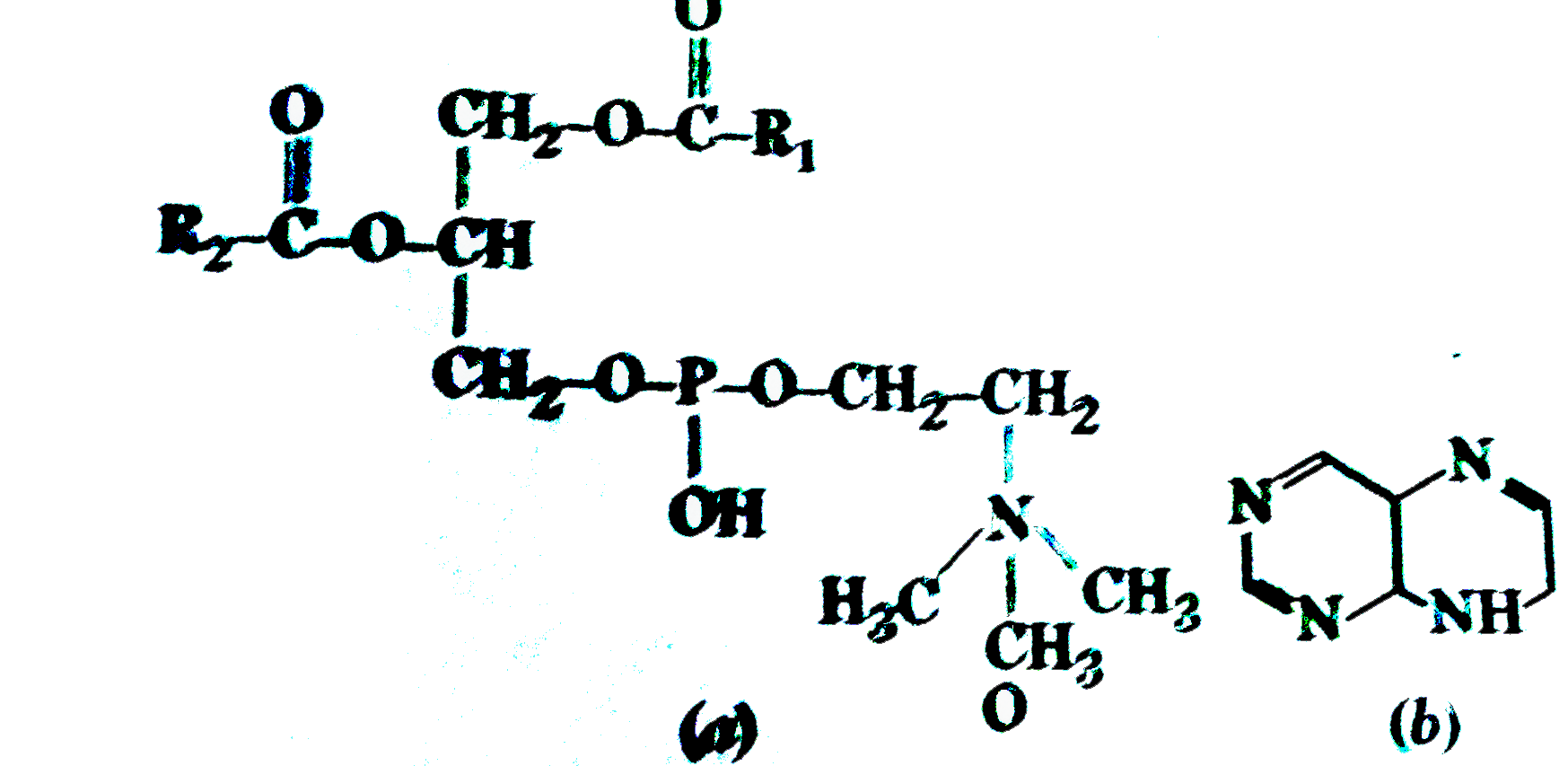Which is not a lipid ?
(a) Wax/lecithin
(b) Sterol/cholesterol
(c) Glycerol/maltose
(d) Lecithin/Ghee
Wax/lecithin
Streol/cholesterol
Gycerol/maltose
Lecithin/Ghee.
The correct Answer is:C
To determine which option is not a lipid, we can analyze each choice provided:
1. Wax/Lecithin:
- Waxes are long-chain fatty acids and are classified as lipids.
- Lecithin is a phospholipid, which is also a type of lipid.
- Therefore, this option consists of lipids.
2. Sterol/Cholesterol:
- Sterols are a subgroup of steroids and cholesterol is a well-known sterol.
- Both are classified as lipids.
- Hence, this option consists of lipids.
3. Glycerol/Maltose:
- Glycerol is a component of triglycerides (which are lipids), but on its own, it is not classified as a lipid.
- Maltose is a disaccharide (a type of carbohydrate) made up of two glucose units.
- Therefore, this option contains a carbohydrate (maltose) and glycerol, which is not classified as a lipid on its own.
4. Lecithin/Ghee:
- Lecithin is a phospholipid, and ghee is a type of clarified butter, which is a fat and therefore a lipid.
- Thus, this option consists of lipids.
After analyzing all the options, we conclude that the correct answer is:
(c) Glycerol/Maltose is not a lipid.
- Waxes are long-chain fatty acids and are classified as lipids.
- Lecithin is a phospholipid, which is also a type of lipid.
- Therefore, this option consists of lipids.
- Sterols are a subgroup of steroids and cholesterol is a well-known sterol.
- Both are classified as lipids.
- Hence, this option consists of lipids.
- Glycerol is a component of triglycerides (which are lipids), but on its own, it is not classified as a lipid.
- Maltose is a disaccharide (a type of carbohydrate) made up of two glucose units.
- Therefore, this option contains a carbohydrate (maltose) and glycerol, which is not classified as a lipid on its own.
- Lecithin is a phospholipid, and ghee is a type of clarified butter, which is a fat and therefore a lipid.
- Thus, this option consists of lipids.
Topper's Solved these Questions
- MOLECULES OF THE CELLBOOK - DINESH PUBLICATION ENGLISHCHAPTER - MOLECULES OF THE CELLEXERCISE - CYG
43 Videos
- MOLECULES OF THE CELLBOOK - DINESH PUBLICATION ENGLISHCHAPTER - MOLECULES OF THE CELLEXERCISE - CYG
43 Videos
- MICROBES IN HUMAN WELFAREBOOK - DINESH PUBLICATION ENGLISHCHAPTER - MICROBES IN HUMAN WELFAREEXERCISE - Brain Teasers-VIII
60 Videos
- MOLLUSCABOOK - DINESH PUBLICATION ENGLISHCHAPTER - MOLLUSCAEXERCISE - CYG
10 Videos
Similar Questions
Knowledge Check
The enzyme which hydrolyses triglycerides to fatty acids and glycerol is called
(a) pepsin
(b) lipase
(c) maltase
(d) zymaseApepsinBlipaseCmaltaseDzymaseMaltose is formed by the following monosaccharides
(a) glucose + glucose
(b) glucose + galactose
(c) glucose + fructose
(d) fructose + galactoseAglucose + glucoseBglucose + galactoseCglucose + fructoseDfructose + galactose
Which is used for staining lipids?
(a) Rhodamine
(b) Iodine
(c) Ethidium bromide
(d) Sudan Red
View SolutionVitamin D is synthesized by body from
(a) LDL cholesterol
(b) HDL cholesterol
(c) Triglycerides
(d) Cellulose
View SolutionWhat is cholecystokinin
(a) Bile pigments
(b) Gastro-intestinal hormone
(c) Enzyme
(d) Lipid
View SolutionWhich of the following is not a components of Lecithin?
View SolutionWhich is correctly identified along with its function

(1) b- uracil, a component of DNA
(2) a- lecithin, a component of cell membrane
(3) b - adenine a nucleotide that makes up nucleic acid
(4) a- triglyceride a major source of energy
View SolutionBranched chain lipids occur in the cell membranes of
(a) Methanobacterium
(b) Mycoplasma
(c) Actinomycetes
(d) Streptomyces
View Solution
